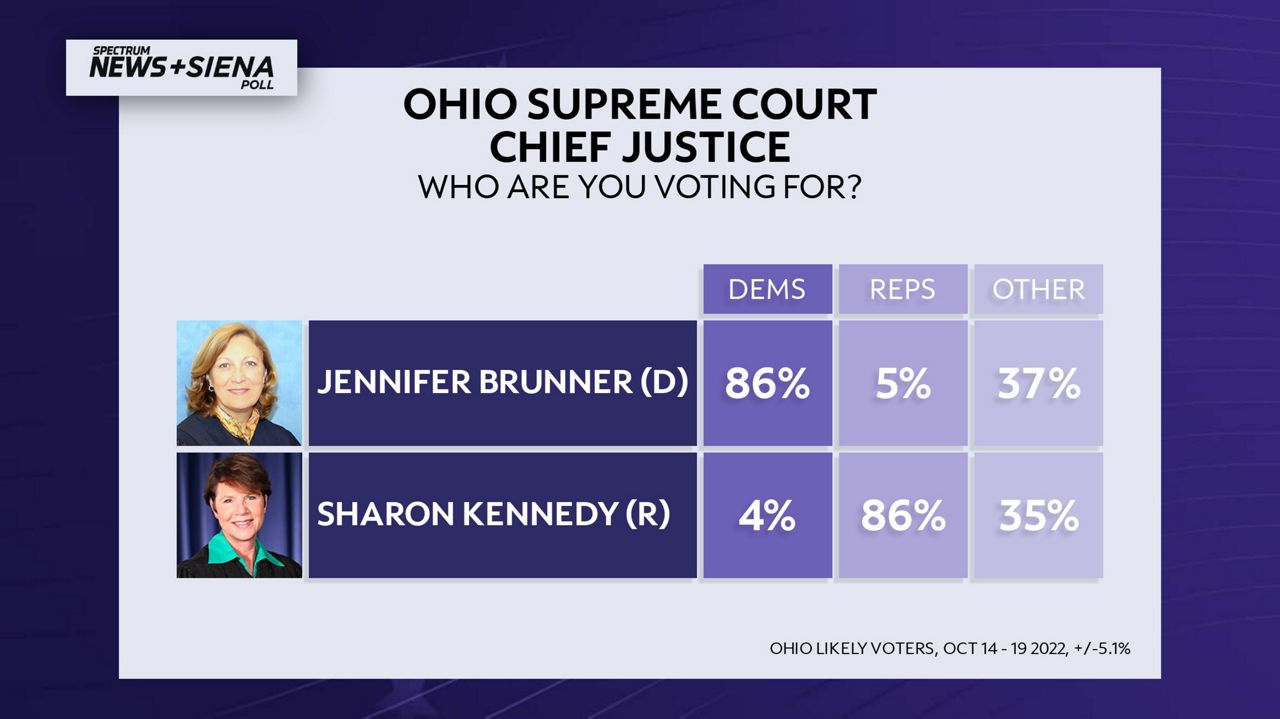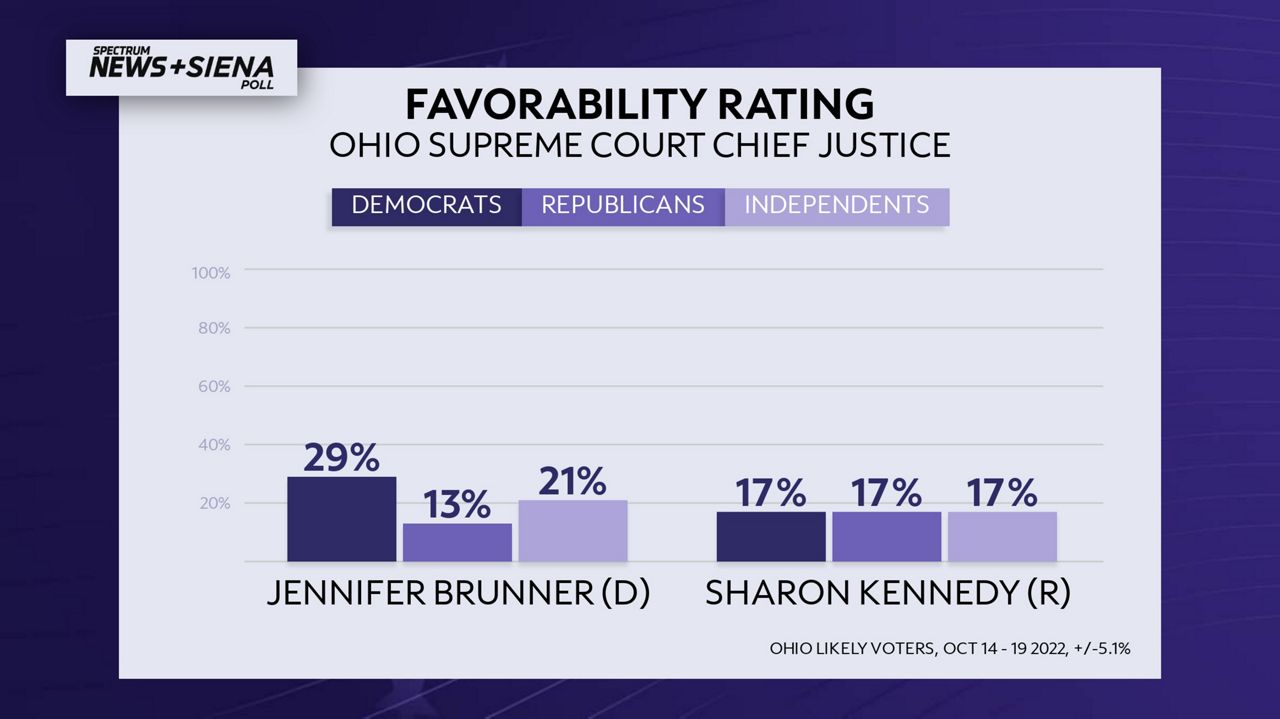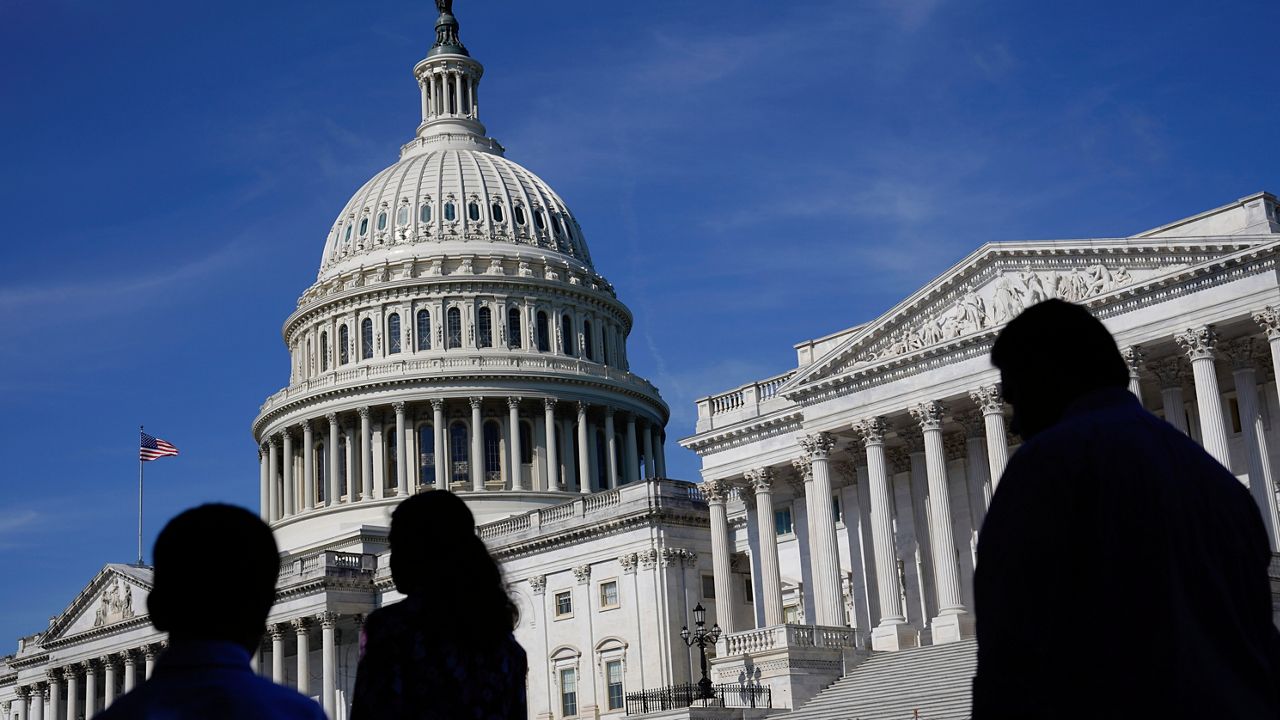OHIO — Recognition has been consistently low in polling for two candidates running for Ohio Supreme Court Chief Justice, despite the influence the high court’s justice can have on top-of-mind issues like abortion, redistricting and LGBTQ+ rights, in our latest Exclusive Spectrum News/Siena College Poll released Monday.
The candidates’ favorability is also low, although the numbers rise fairly evenly when voters have knowledge of party affiliation, the most recent poll shows.
Spectrum News/Siena College Polls conducted in September and October of more than 640 likely Ohio voters asked voters to weigh in on candidates and issues they will face on Election Day.
Democrat Jennifer Brunner and Republican Sharon Kennedy, who both serve as Ohio Supreme Court Justices, are running a tight race for chief justice in November.
The winner will assume the chief justice seat from incumbent Republican Maureen O'Connor who can’t seek re-election because of age restrictions in the Ohio Constitution.
Ohio is one of 31 states that requires justices to retire at the end of the term following their 70th birthday. O’Connor, whose term ends Dec. 31, turned 70 during the current term.
In October’s poll, when voters were asked whether they viewed Brunner and Kennedy favorably or unfavorably, a strong majority indicated they didn’t know the candidates or didn’t want to weigh in.
For Brunner, a total of 69% of voters didn’t know or had no opinion about favorability, while 75% didn’t know or had no opinion about Kennedy.
For that question, pollsters did not identify the candidates’ party affiliation, said Siena College Director Donald Levy, Ph.D.
Fewer than one-quarter of the voters who did have an opinion viewed either candidate favorably, with Brunner at 20% favorability and Kennedy at 17%. Brunner was viewed unfavorably by 11% and Kennedy by 14% of those polled.
Those numbers differ slightly from the Spectrum News/Siena College Research Institute Poll conducted in mid-September.
In that poll, Brunner was viewed favorably by 15% of voters and Kennedy by 12%, while 76% of voters said they had no opinion about Brunner, and 74% indicating no opinion about Kennedy.
Levy said low percentages for the chief justice candidates’ favorability aren’t that surprising in an election cycle with more high-profile races.
“It's more than most voters are capable of, or interested in, paying attention to,” Levy said.
In Ohio, this will be the first Supreme Court election in which party affiliation is printed on general-election ballots. Prior to 2021, when Gov. Mike DeWine signed Senate Bill 80 into law, the parties nominated judicial candidates but no party affiliation was indicated on ballots.

Pollsters did mention the candidates’ party affiliation when asking who voters would choose for Ohio’s Supreme Court Chief Justice if the election were held today, Levy said.
“So we identify them by party, then suddenly 86% of Democrats say they're going to vote for Brunner; 86% of Republicans say they're going to vote for Kennedy,” he said. “So that's partisanship, you know, coming home to roost. That's all they had to hear.”
In the October poll, only 15% of total voters didn’t know or couldn’t answer who they would vote for if the election were today, while in the September poll, 18% indicated they didn’t know.
Numbers were fairly consistent for that question across the September and October polls.
In September, Brunner and Kennedy each captured 40% of total votes if the election were today. Brunner received 88% of Democrats votes and Kennedy garnered 83% of her party’s votes.
Independents were more undecided than partisan voters, with 39% for Brunner, 30% for Kennedy and 27% not ready to answer.
In October polling, Brunner was up one point from the previous month to 41% of total voters, with 86% Democrats. Kennedy was up two points from September with 42% of total voters with 86% of Republican votes.
Independents with no opinion remained relatively high at 24%, with 37% for Brunner and 35% for Kennedy.










